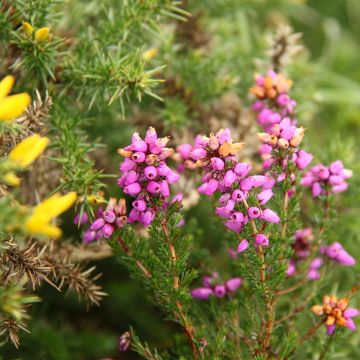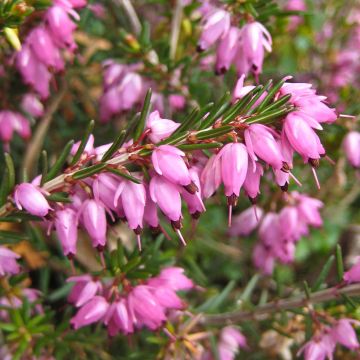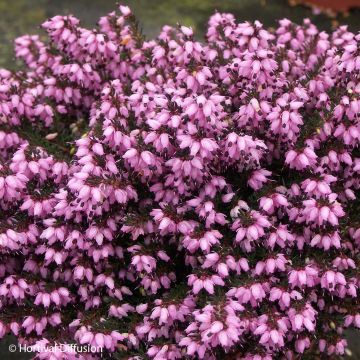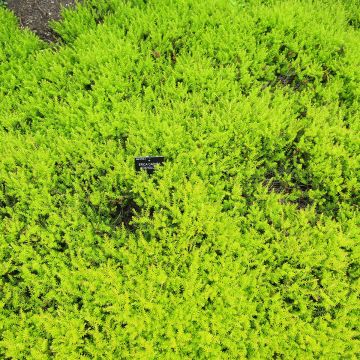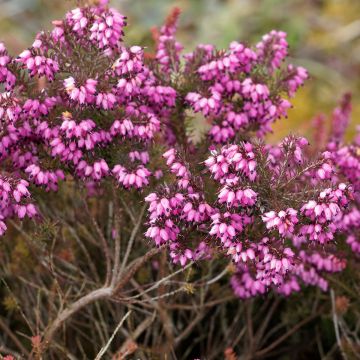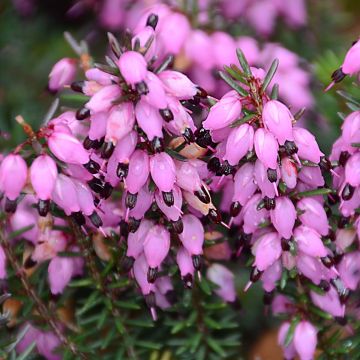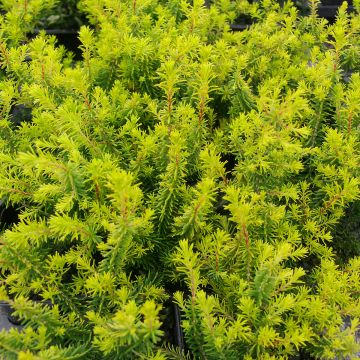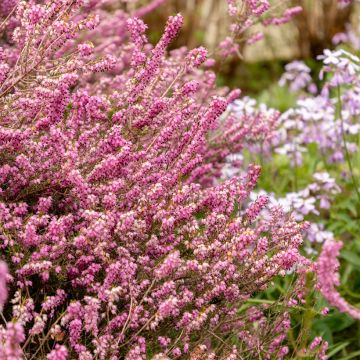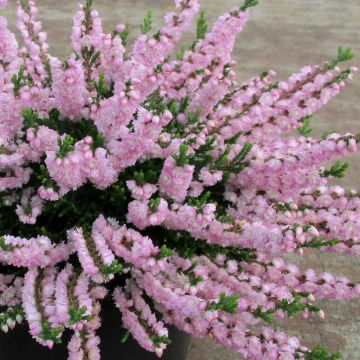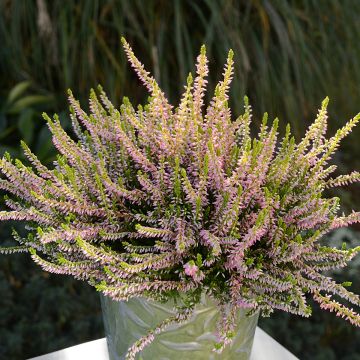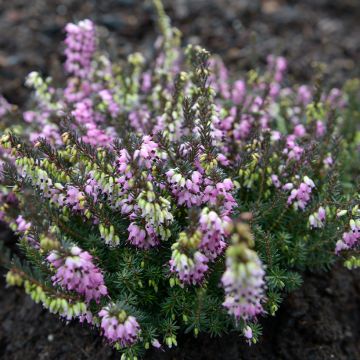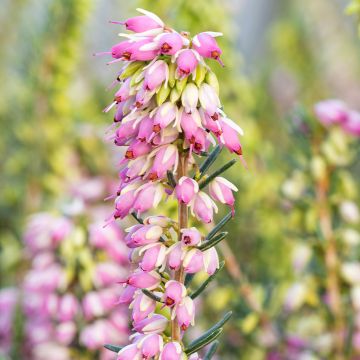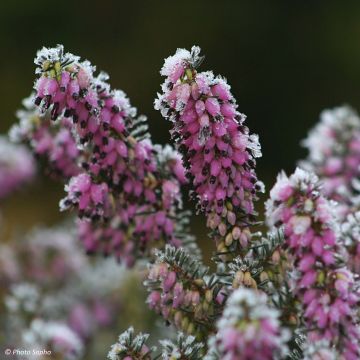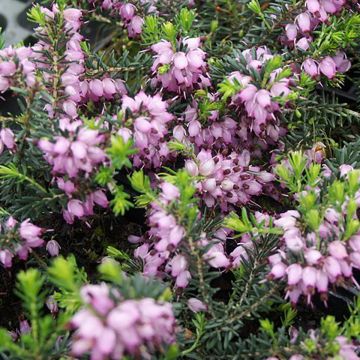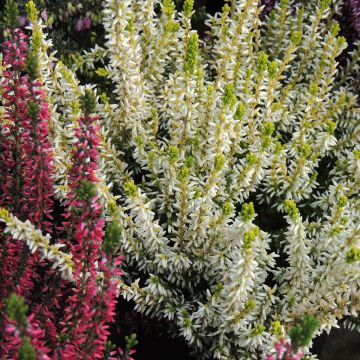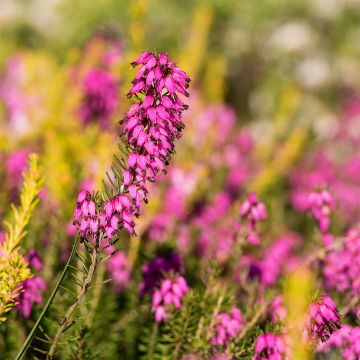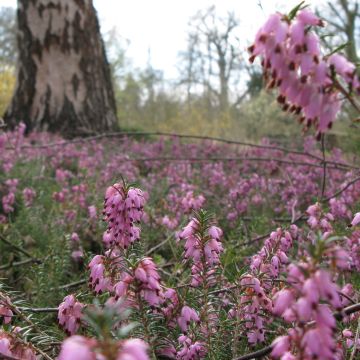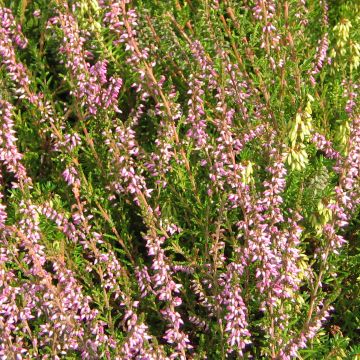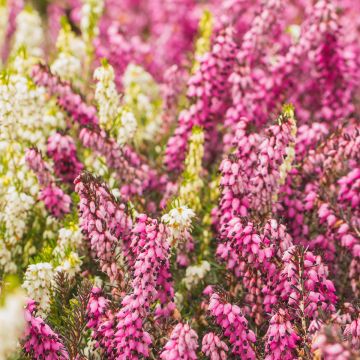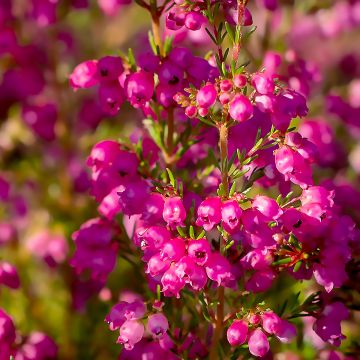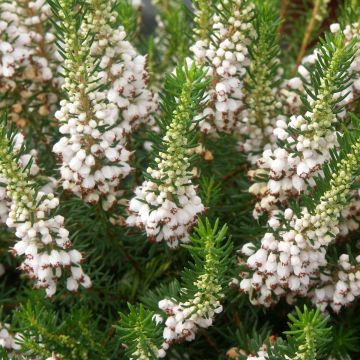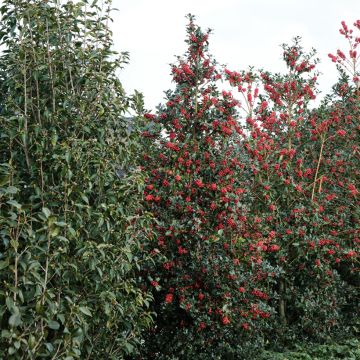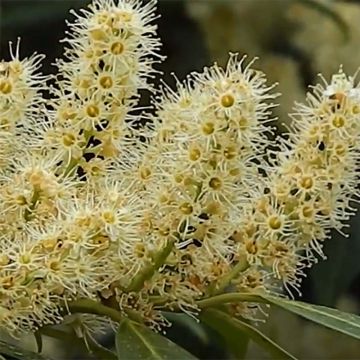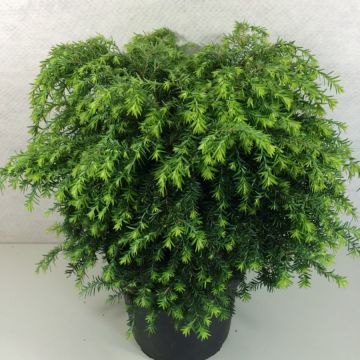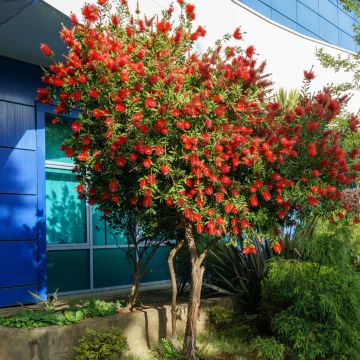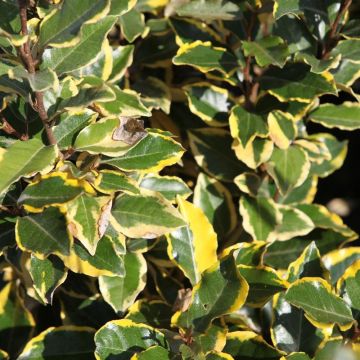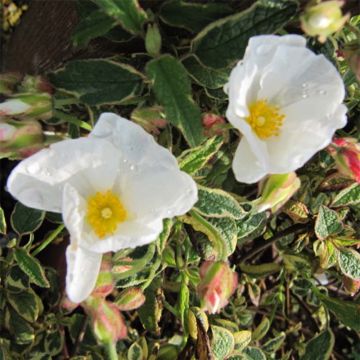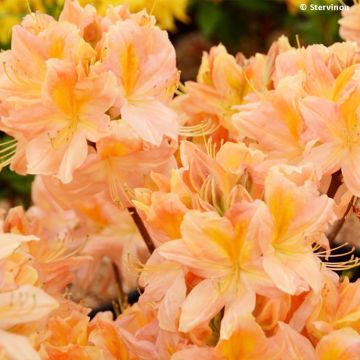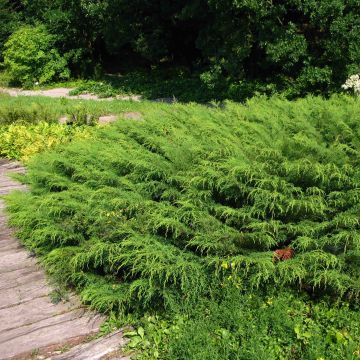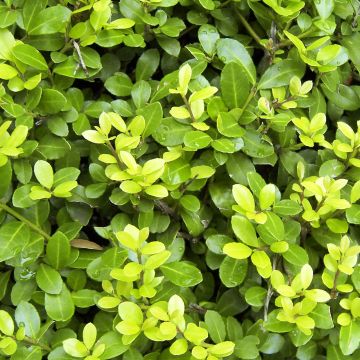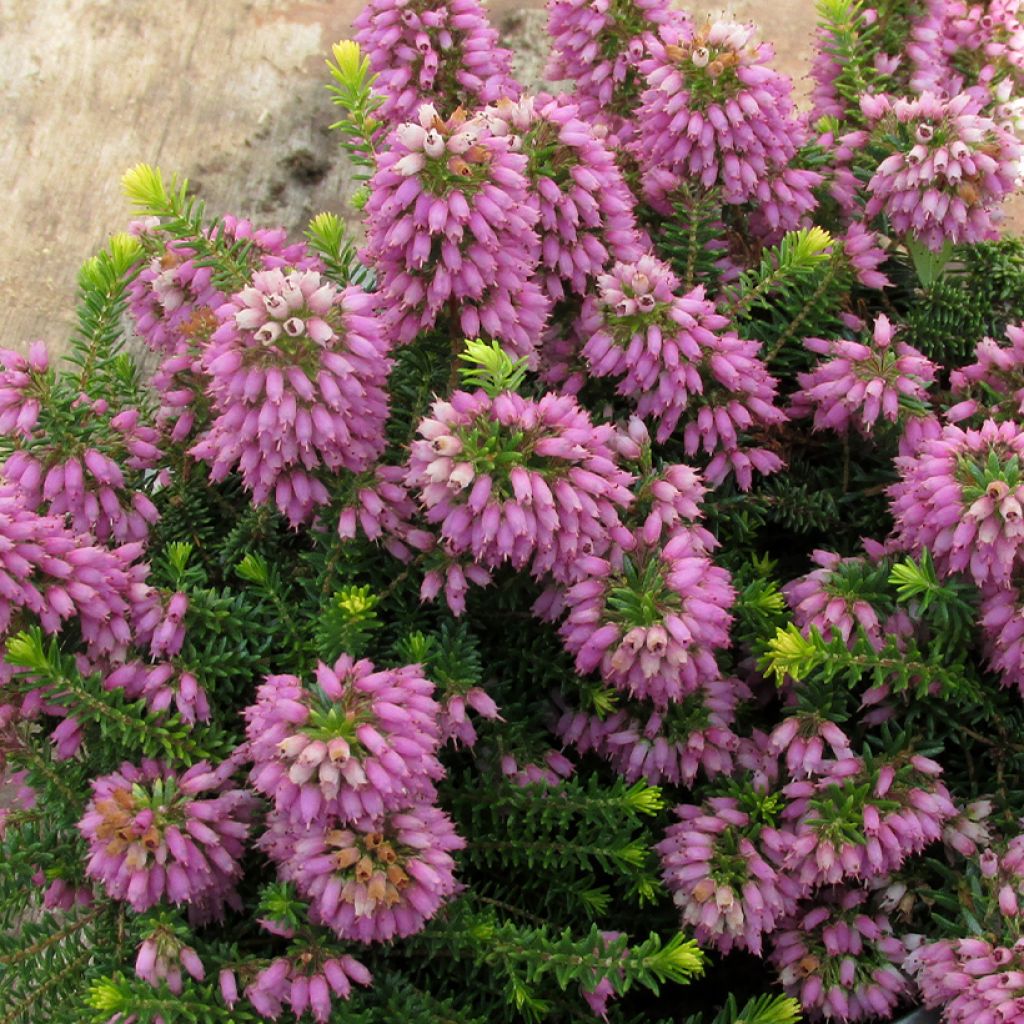

Erica williamsii P.D. Williams - Heath
Erica williamsii P.D. Williams - Heath
Erica x williamsii P.D. Williams
Williams' Heath, Williams' Heather
Why not try an alternative variety in stock?
View all →This plant carries a 24 months recovery warranty
More information
We guarantee the quality of our plants for a full growing cycle, and will replace at our expense any plant that fails to recover under normal climatic and planting conditions.
From €5.90 for pickup delivery and €6.90 for home delivery
Express home delivery from €8.90.
Does this plant fit my garden?
Set up your Plantfit profile →
Description
Erica x williamsii P.D. Williams Summer Heather could be called the Cornouille Pearl, due to its origins and its lilac pink bell-shaped flowers. It originates from this region, where it thrives on top of steep cliffs, exposed to winds and sea spray, growing in poor rocky soil, but sufficiently watered by regular rainfall. From this environment, it retains the ability to adapt to difficult conditions. It has a generous length and intensity of flowering, while displaying attractive ever-changing foliage through the seasons. It forms a cushion with a very natural appearance, blending in with its surroundings: rocks, old trunks, tree bases... It is a hardy plant that doesn't mind the cold, but it requires an acidic, fairly moist, and well-drained soil to thrive.
Erica x williamsii 'P.D. Williams' belongs to the ericaceae family. It is a summer heather, resulting from cross-breeding between Erica tetralix and Erica vagans. The 'P.D. Williams' variety is a natural hybrid discovered in the northwest of Trelan on the Lizard Peninsula, in the Cornwall region of England, by PD Williams of Lanarth, before 1910. On this southernmost tip of Great Britain, there are cliffs of greenish-coloured rock, called serpentine rock, where rare plants grow. This cultivar forms a low and dense bush, with a height of 25 cm and a spread of 45 cm. Small needles grow on thin and twisted branches, whorled in groups of 3 to 4, deep green with yellow tips in spring, turning to light green in summer, and eventually taking on bronze hues for winter. Its small bell-shaped flowers ranging from lilac pink to orchid purple, measuring 4 to 5 mm in length, are also whorled, grouped in small elongated clusters at the top of leafy stems. They appear in the heart of summer, last until October and are loved by bees.
The P.D. Williams Summer Heather has all the qualities one would expect from a heather. A long and remarkable flowering period combined with ever-changing persistent foliage throughout the seasons. Its low, dense, and compact growth allows it to be used in ground cover beds, as borders for heather beds, on slopes or rockeries, to dress the bases of trees and large shrubs, but be careful to avoid excessively hot exposures. It can easily find its place alongside other heathers whose flowering will take over, while having similar development and growth, such as Erica x carnea, Erica x darleyensis, or Erica vagans. Its long summer flowering brightens up shaded areas with its vibrant colours. It brings charm and cheerfulness to low-growing grass beds such as carex, ophiopogon, molinia, uncinia, hakonechloa, pennisetum... It can also be mixed in a low and shaded bed with andromedas, bearberries, pachysandra, or Lithodora fruticosa. In acidic soil, heathers form beautiful carpets at the base of larger shrubs, dressing their base: mountain laurel, rhododendrons, camellias, deciduous azaleas, andromedas... Cultivated in pots or containers, it enriches balconies, terraces, or patios with its intense flowering.
Easy to grow P.D. Williams Summer Heather prefers acidic to neutral soil, but it seems to adapt to slightly alkaline soil. In any case, well-drained soil without stagnant moisture is necessary. It does not tolerate long periods of drought well and appreciates moist soil. Mulching is a solution to maintain relative soil moisture. Almost maintenance-free, this heather only requires light pruning after flowering, in October. This operation will remove faded flowers and promote the growth of fresh foliage.
Report an error about the product description
Plant habit
Flowering
Foliage
Botanical data
Erica
x williamsii
P.D. Williams
Ericaceae
Williams' Heath, Williams' Heather
Cultivar or hybrid
Other Heather
Planting and care
Erica x williamsii P.D. Williams prefers a fairly fertile soil, although it can tolerate poor terrain. However, it should be peaty, light, sandy, very acidic (pH between 4 and 6), moist, and well-drained. To allow heathers to be planted in the ground or in pots, recreate a soil mixture with 1/3 ericaceous soil, 1/3 non-calcareous organic soil, and 1/3 sand. It is preferable to plant in autumn to benefit from winter rooting or in spring, without burying the collar too much. This plant appreciates non-scorching full sun or partial shade. In northern regions, it can be planted in full sun, while in hot climates, a partially shaded exposure is preferable. A well-established plant can tolerate some drought for a short period. In heavy and poorly drained soil, it will disappear as this plant is sensitive to root rot.
During the first two years, carefully weed around the base. Adapted to dry environments, the summer roots are highly branched in the soil and prevent the establishment of other species nearby once they are well established. In case of prolonged drought, mulch the base to retain some moisture. Prune the clumps to half height, just after flowering, from a young age, which will allow the clumps to remain dense while producing fresh foliage. A covering of shredded bark or peat is a good idea in colder regions.
Planting period
Intended location
Care
This item has not been reviewed yet - be the first to leave a review about it.
Evergreen shrubs
Haven't found what you were looking for?
Hardiness is the lowest winter temperature a plant can endure without suffering serious damage or even dying. However, hardiness is affected by location (a sheltered area, such as a patio), protection (winter cover) and soil type (hardiness is improved by well-drained soil).

Photo Sharing Terms & Conditions
In order to encourage gardeners to interact and share their experiences, Promesse de fleurs offers various media enabling content to be uploaded onto its Site - in particular via the ‘Photo sharing’ module.
The User agrees to refrain from:
- Posting any content that is illegal, prejudicial, insulting, racist, inciteful to hatred, revisionist, contrary to public decency, that infringes on privacy or on the privacy rights of third parties, in particular the publicity rights of persons and goods, intellectual property rights, or the right to privacy.
- Submitting content on behalf of a third party;
- Impersonate the identity of a third party and/or publish any personal information about a third party;
In general, the User undertakes to refrain from any unethical behaviour.
All Content (in particular text, comments, files, images, photos, videos, creative works, etc.), which may be subject to property or intellectual property rights, image or other private rights, shall remain the property of the User, subject to the limited rights granted by the terms of the licence granted by Promesse de fleurs as stated below. Users are at liberty to publish or not to publish such Content on the Site, notably via the ‘Photo Sharing’ facility, and accept that this Content shall be made public and freely accessible, notably on the Internet.
Users further acknowledge, undertake to have ,and guarantee that they hold all necessary rights and permissions to publish such material on the Site, in particular with regard to the legislation in force pertaining to any privacy, property, intellectual property, image, or contractual rights, or rights of any other nature. By publishing such Content on the Site, Users acknowledge accepting full liability as publishers of the Content within the meaning of the law, and grant Promesse de fleurs, free of charge, an inclusive, worldwide licence for the said Content for the entire duration of its publication, including all reproduction, representation, up/downloading, displaying, performing, transmission, and storage rights.
Users also grant permission for their name to be linked to the Content and accept that this link may not always be made available.
By engaging in posting material, Users consent to their Content becoming automatically accessible on the Internet, in particular on other sites and/or blogs and/or web pages of the Promesse de fleurs site, including in particular social pages and the Promesse de fleurs catalogue.
Users may secure the removal of entrusted content free of charge by issuing a simple request via our contact form.
The flowering period indicated on our website applies to countries and regions located in USDA zone 8 (France, the United Kingdom, Ireland, the Netherlands, etc.)
It will vary according to where you live:
- In zones 9 to 10 (Italy, Spain, Greece, etc.), flowering will occur about 2 to 4 weeks earlier.
- In zones 6 to 7 (Germany, Poland, Slovenia, and lower mountainous regions), flowering will be delayed by 2 to 3 weeks.
- In zone 5 (Central Europe, Scandinavia), blooming will be delayed by 3 to 5 weeks.
In temperate climates, pruning of spring-flowering shrubs (forsythia, spireas, etc.) should be done just after flowering.
Pruning of summer-flowering shrubs (Indian Lilac, Perovskia, etc.) can be done in winter or spring.
In cold regions as well as with frost-sensitive plants, avoid pruning too early when severe frosts may still occur.
The planting period indicated on our website applies to countries and regions located in USDA zone 8 (France, United Kingdom, Ireland, Netherlands).
It will vary according to where you live:
- In Mediterranean zones (Marseille, Madrid, Milan, etc.), autumn and winter are the best planting periods.
- In continental zones (Strasbourg, Munich, Vienna, etc.), delay planting by 2 to 3 weeks in spring and bring it forward by 2 to 4 weeks in autumn.
- In mountainous regions (the Alps, Pyrenees, Carpathians, etc.), it is best to plant in late spring (May-June) or late summer (August-September).
The harvesting period indicated on our website applies to countries and regions in USDA zone 8 (France, England, Ireland, the Netherlands).
In colder areas (Scandinavia, Poland, Austria...) fruit and vegetable harvests are likely to be delayed by 3-4 weeks.
In warmer areas (Italy, Spain, Greece, etc.), harvesting will probably take place earlier, depending on weather conditions.
The sowing periods indicated on our website apply to countries and regions within USDA Zone 8 (France, UK, Ireland, Netherlands).
In colder areas (Scandinavia, Poland, Austria...), delay any outdoor sowing by 3-4 weeks, or sow under glass.
In warmer climes (Italy, Spain, Greece, etc.), bring outdoor sowing forward by a few weeks.


































